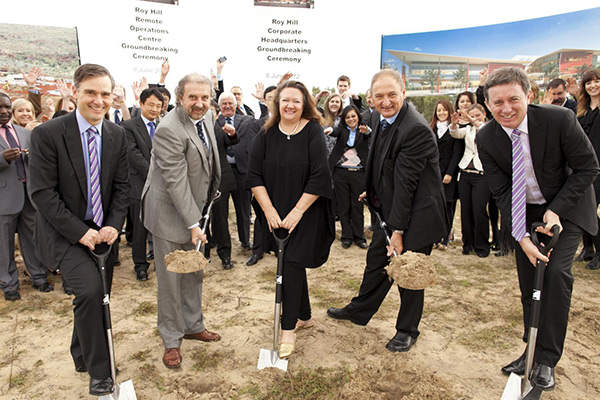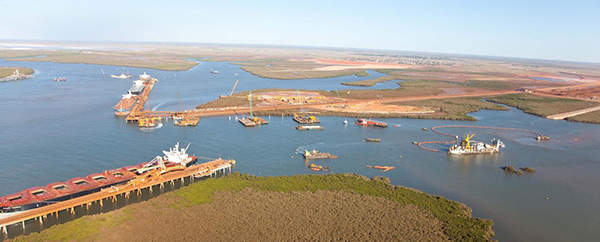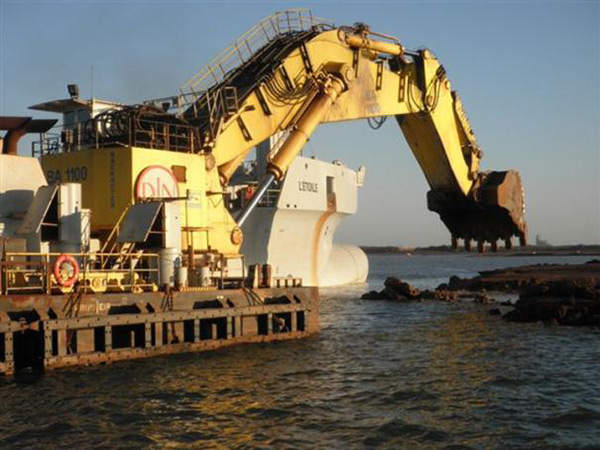Roy Hill iron ore project is located in the Pilbara region of Australia. The mine is part of the Chichester Range in Western Australia and is the biggest undeveloped Marra Mamba deposit in the region.
The mine is operated by Roy Hill Holdings in which Hancock Prospecting is the majority shareholder (70%). The remaining 30% interest is owned by a consortium of companies including POSCO Corporation (12.5%), Marubeni Corporation (12.5%) and China Steel Corporation (2.5%).
The project is ideally located to supply ore to the growing Asian markets. An investment of $10bn is expected to be made in the project. Roy Hill achieved financial closure for the project in March 2014 with the signing of a 10.5-year finance agreement for $7.2bn of debt including loans and guarantees from five Export Credit agencies and a consortium of 19 commercial banks.
A pre-feasibility study for the iron ore mine was completed in 2008. A bankable feasibility study has also been completed for the mine. Both studies have established the strong feasibility of the project, with mine life estimated at 30 years.
The first ore is expected to be produced in 2015 at a rate of 55 million tons per annum (mtpa). Roy Hill has already signed offtake agreements with Shougang International and Yaxin Steel.
The project is expected to see approximately 3,600 construction workers and 2,000 operational personnel hired.
Iron reserves
Roy Hill is estimated to contain 2.4 billion tonnes of reserves. Indicated resources are estimated at 485 million tonnes (mt) grading at 55% iron. Inferred resources are estimated at 680mt grading at 55% iron.
Mineralisation at the iron ore project
The ore body is a simple flat dipping structure. Mineralisation at Roy Hill occurs in the form of a Marra Mamba formation called Nammuldi Member. It also occurs in the overlying detrital deposits.
The Marra Mamba formation lies above the shale, chert and dolomite of the Jeerinah formation. The detrital deposits are made of clays, unconsolidated silt, sand and gravel.
Mining and processing at Roy Hill
Roy Hill will be a low risk open pit mining operation. Maximum pit depth will be 100m with a strip ratio of 4:1. Conventional drill, blast and haul techniques will be used to develop the mine. It is planned to be developed in two stages.
Stage one includes construction of the infrastructure and mining of 7,200ha of the project site. It also includes dewatering for both stages. The second stage will include processing of ore from the stage two area and installing external water supply.
Several pits will be mined simultaneously to enable blending of ore to meet customer specifications. In-pit crushing will be used to reduce haul distances. Mined-out pits will be backfilled progressively throughout the mine’s life.
Ore processing
The iron ore mined from Roy Hill will be transported via a conveyor to the processing plant. Preliminary processing will include conventional crushing and screening to separate lumps and fines. Lumps will be diverted to the ore stockpiles which can hold one week’s production. Fines will be sent to the desanding plant.
Transport and handling of ore for export
A dedicated 344km high-speed heavy-haul rail line will be built to transport ore from the mine to Port Hedland for export. The trains will feature 232 wagons with electric-controlled braking. Five trains containing three locomotives each will transport 31,450t of ore per day to the port.
A dedicated facility will be built at the port to handle the transported iron ore. The facility will receive, stockpile and export 55mt of ore. It will include two berths and one ship loader capable of handling 250,000dwt vessels. An unloader, stockyard, and conveyor system are also part of the facility. The facility has been designed to accommodate future expansion.
Dredging activities for the construction of the port facility commenced in June 2011 and completed in May 2012.
The mine’s operations will be monitored from the Remote Operations Centre at the site. Construction of the monitoring facility started in June 2012.
Contractors
Clough was awarded the Early Contractor Involvement contract for the Roy Hill iron ore project in August 2011.






